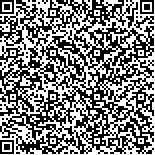| 引用本文: | 张翠涵,沈长虹,冉 倩,孙 晨,程 芳,姚子晴,张若琪.光学标测技术评价乌头碱心脏毒性的剂量关系[J].中国现代应用药学,2024,41(12):71-77. |
| zhang Cuihan,Shen Changhong,Ran Qian,Sun Chen,Cheng Fang,Yao Ziqing,Zhang Ruoqi.Optical mapping technology to evaluate the dose relationship of aconitine cardiotoxicityZHANG Cuihan, SHEN Changhong, RAN Qian, SUN Chen, CHENG Fang, Yao Ziqing, ZHANG Ruoqi*(State Key Laboratory of Southwestern Chinese Medicine Resources, Chengdu University of Traditional Chinese Medicine, Chengdu 611137, China.)[J].Chin J Mod Appl Pharm(中国现代应用药学),2024,41(12):71-77. |
|
| |
|
|
| 本文已被:浏览 243次 下载 114次 |

码上扫一扫! |
|
|
| 光学标测技术评价乌头碱心脏毒性的剂量关系 |
|
张翠涵, 沈长虹, 冉 倩, 孙 晨, 程 芳, 姚子晴, 张若琪
|
|
成都中医药大学药学院西南特色中药资源国家重点实验室
|
|
| 摘要: |
| 目的 探究不同浓度乌头碱作用于心脏时,对大鼠心脏心室电生理的影响。方法 利用光学标测(optical mapping)技术,通过体外给药乌头碱0.3、1、3 ng·ml-1,观察给药前及给药15min后不同浓度乌头碱对大鼠心室动作电位(action potential, AP)及钙信号的影响。结果 与空白组比较,在自发和6HZ刺激节律下,乌头碱都能浓度依赖性延缓动作电位的传导,特别是在浓度为3 ng·ml-1时(P<0.05,P<0.01)。当乌头碱浓度为1、3 ng·ml-1时,心室动作电位时程(action potential duration, APD)显著延长(P<0.01)。还能增加动作电位传导的离散度(P<0.05),并且降低有效不应期(effective refractory period,ERP)与动作电位时程(APD90)的比值(ERP/APD90)(P<0.01)。此外,乌头碱还能浓度依赖性延缓钙信号的传导(P<0.01),降低钙传导的速度(P<0.05,P<0.01),增加钙传导及钙瞬变时程(Ca2+transient duration, CTD)的离散度(P<0.05,P<0.01),降低钙信号的幅值(P<0.01)。结论 采用光学标测技术可直观的发现,乌头碱可浓度依赖性的影响大鼠心室动作电位及钙信号的传导来诱导心律失常的发生。 |
| 关键词: 乌头碱 光学标测 心脏毒性 动作电位 钙信号 |
| DOI:10.13748/j.cnki.issn1007-7693.20230355 |
| 分类号: |
| 基金项目: |
|
| Optical mapping technology to evaluate the dose relationship of aconitine cardiotoxicityZHANG Cuihan, SHEN Changhong, RAN Qian, SUN Chen, CHENG Fang, Yao Ziqing, ZHANG Ruoqi*(State Key Laboratory of Southwestern Chinese Medicine Resources, Chengdu University of Traditional Chinese Medicine, Chengdu 611137, China.) |
|
zhang Cuihan, Shen Changhong, Ran Qian, Sun Chen, Cheng Fang, Yao Ziqing, Zhang Ruoqi
|
|
State Key Laboratory of Southwestern Chinese Medicine Resources, Chengdu University of Traditional Chinese Medicine
|
| Abstract: |
| ABSTRACT: OBJECTIVE Investigation of the effects of different concentrations of aconitine on the ventricular electrophysiology of the rat heart when applied to the heart. METHODS By optical mapping technology, the effects of different concentrations of aconitine on ventricular action potential and calcium signal in rats before and 15min after administration were observed by in vitro administration of aconitine 0.3, 1, 3 ng·ml-1. RESULTS Compared with the Control group, aconitine can be concentration-dependent to delay the conduction of action potentials under both spontaneous and 6HZ stimulation rhythms, especially at a concentration of 3 ng·ml-1 (P<0.05, P<0.01). When the concentration of aconitine was 1 and 3 ng·ml-1, the action potential duration (APD) of the ventricle was significantly prolonged (P<0.01). It can also increased the dispersion of action potential conduction (P<0.05) and reduced the ratio of effective refractory period (ERP) to APD90 (P<0.01). In addition, aconitine can also be concentration-dependent delay of calcium signal conduction (P<0.01), reduced the speed of calcium conduction (P<0.05, P<0.01), increased the dispersion of calcium conduction and calcium transient duration (CTD) (P<0.05, P<0.01), and reduced the amplitude of calcium signal(P<0.01). CONCLUSION Using the optical labeling technique, it can be visualized that aconitine can induce arrhythmia by concentration-dependent effects on ventricular action potential and calcium signaling in rats. |
| Key words: aconitine optical mapping cardiotoxicity action potential calcium signaling |
|
|
|
|
